The miniature continent
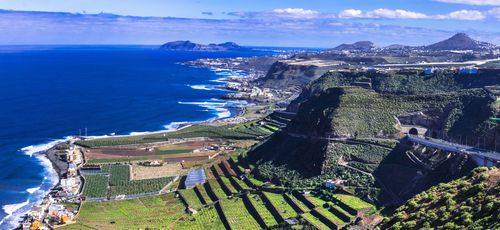
Aerial view of Las Palmas de Gran Canaria
- © trabantos / Shutterstock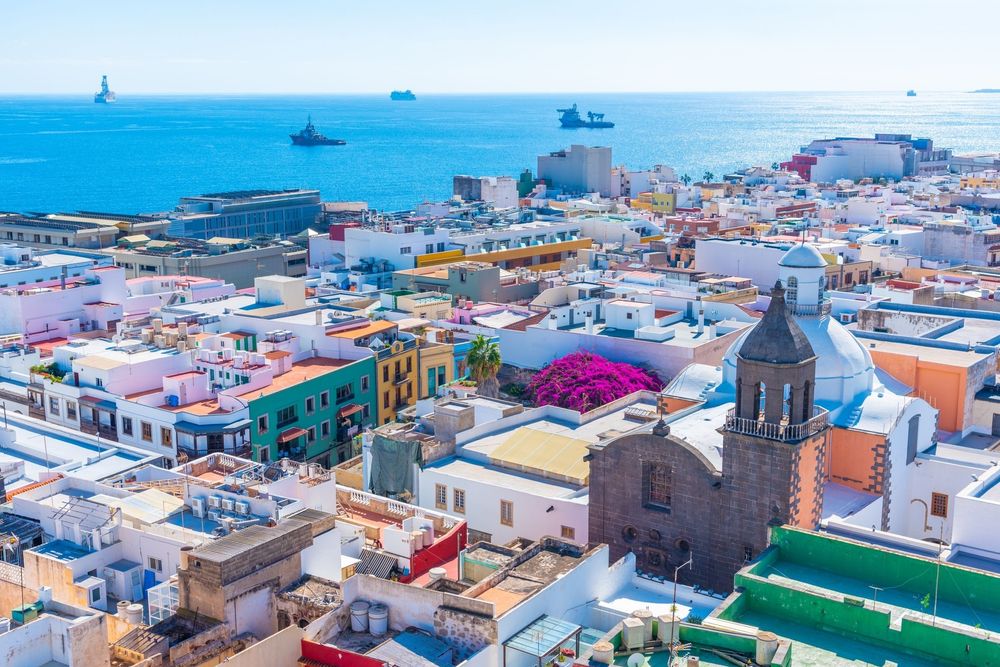
The miniature continent
Travelling to the Canary Islands means discovering a different side of Spain, on the shores of the Atlantic. Of the seven islands in the Canary archipelago, Gran Canaria is the third largest after Tenerife and Fuerteventura. Nicknamed the "miniature continent", Gran Canaria stands out for the diversity of its climate and landscapes, but above all for its fabulous beaches of white sand and black lava, as well as its magnificent natural areas. Like the rest of the Canary Islands, Gran Canaria enjoys a subtropical climate, better known as "eternal spring", which leaves a diverse and impressive flora and fauna all year round.
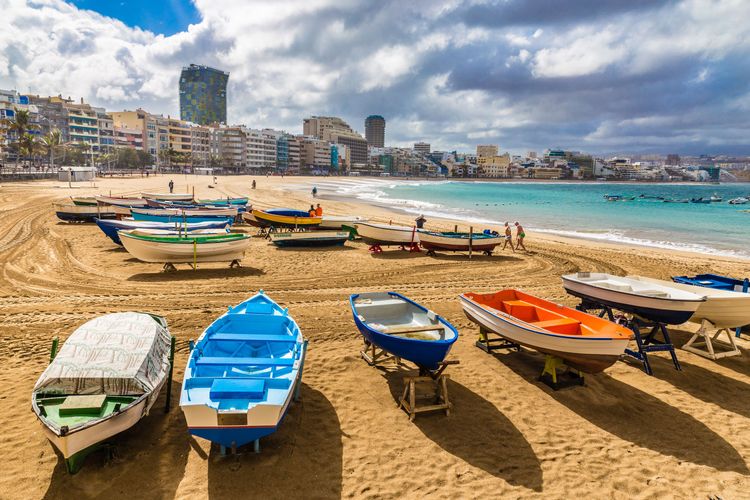
Boats on the beach, Las Palmas de Gran Canaria
- © Zdenek Matyas Photography / ShutterstockSince 2005, almost half the island of Gran Canaria has been recognised by Unesco as a biosphere reserve, as have the islands of La Palma and Lanzarote, El Hierro and, later, Fuerteventura. Made up of a variety of ecosystems, these reserves are areas where solutions are promoted to reconcile the conservation of biodiversity with the sustainable presence of mankind. They represent "sites supporting science for sustainability" and are internationally recognised as part of UNESCO's Man and the Biosphere (MaB) programme.
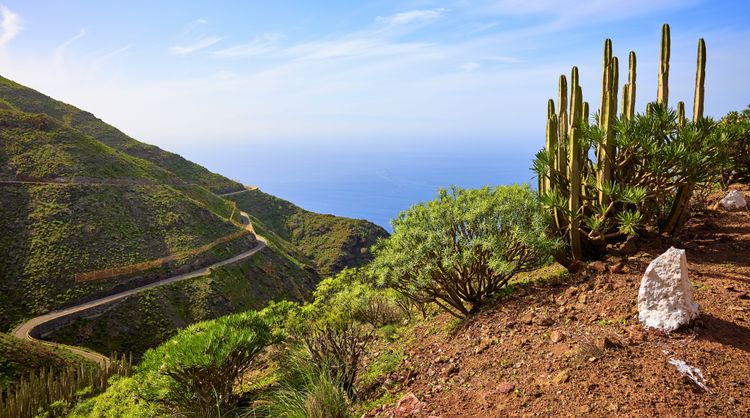
View from the picturesque route Sendero Arena Blanca, Artenara, Gran Canaria
- © trattieritratti / ShutterstockTo the north, the Agaete district is surrounded by fertile banana-growing valleys. To the east lies Las Canteras beach, bordered by a magnificent coral reef, just above Las Palmas de Gran Canaria, the island's capital. In this cosmopolitan city open to the sea, the beaches are a must, as are the duty-free shopping areas.
Further inland, to the east of the Doramas rural park, lies the municipality of Teror, a place of great historical and natural value, with a vast religious heritage. Further south is Roque Nublo. This 80-metre peak, which rises to 1,700 metres, is a sacred place for the Guanches (the original community), as is the Roque Bentayga and the other areas that make up the Sacred Mountains. Together with the Risco Caído, they form the cultural landscape of the island of Gran Canaria.
Crossing the island and following the south-west road, we find Mogán, a welcoming and peaceful place where you can still feel the atmosphere of a typical Canarian seaside resort, as well as La Aldea de San Nicolás, Santa Lucía, with Puerto Rico and Arguineguín a little further down the road. Continuing towards the southern tip of Gran Canaria, you will find the Maspalomas dunes, a unique natural area dotted with long golden sandy beaches, the historic Maspalomas lighthouse and many other activities that make Gran Canaria such a rich destination.
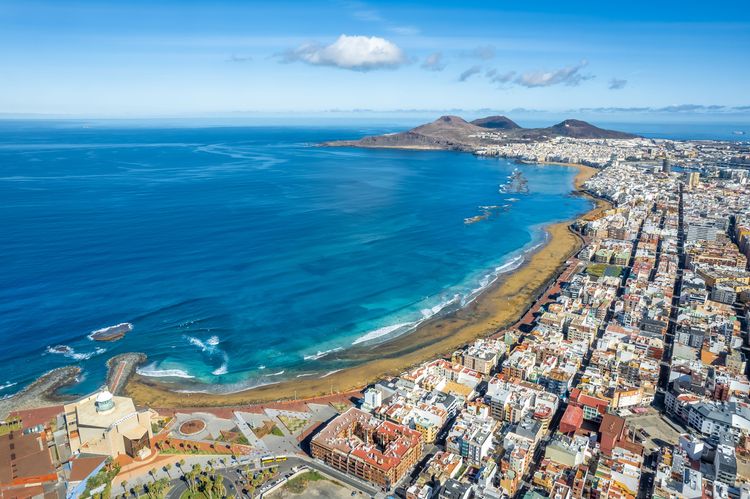
Panoramic view of Las Palmas, Gran Canaria, Canary Islands, Spain
- © Serenity-H / ShutterstockWhether you're looking for a place to relax or a place to party, Gran Canaria really does have a lot to offer. Its natural spaces, picturesque corners and the mix of cultures that is so characteristic of the island are real gifts to be discovered on your next visit. There are also dozens of beaches, a whole network of cultural spaces, a rich gastronomy and a carnival bursting with joy, colour and fun.
So come and discover the island and risk falling in love with it, its people and its exceptional landscapes. The "miniature continent" awaits you, so visit it from top to bottom and enjoy the "eternal spring" of the Canaries. The time spent here, even if it passes quickly, is eternal.
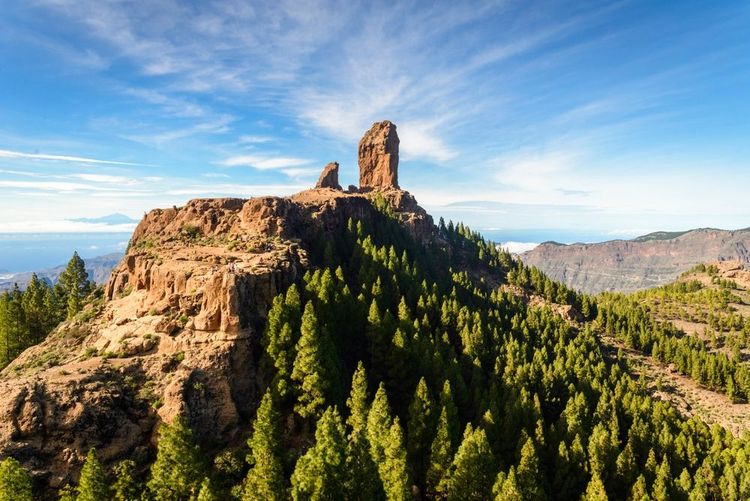
The sacred mountain Roque Nublo
- © inigolai-Photography / Shutterstock
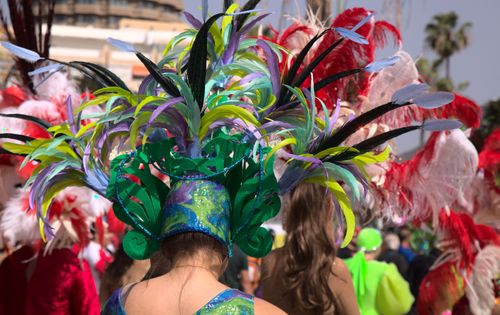
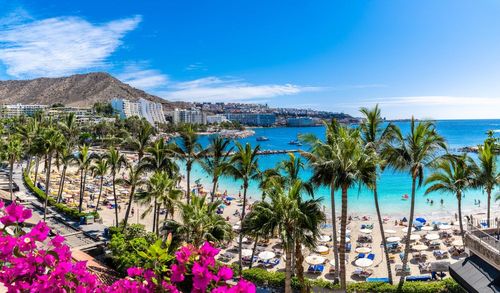
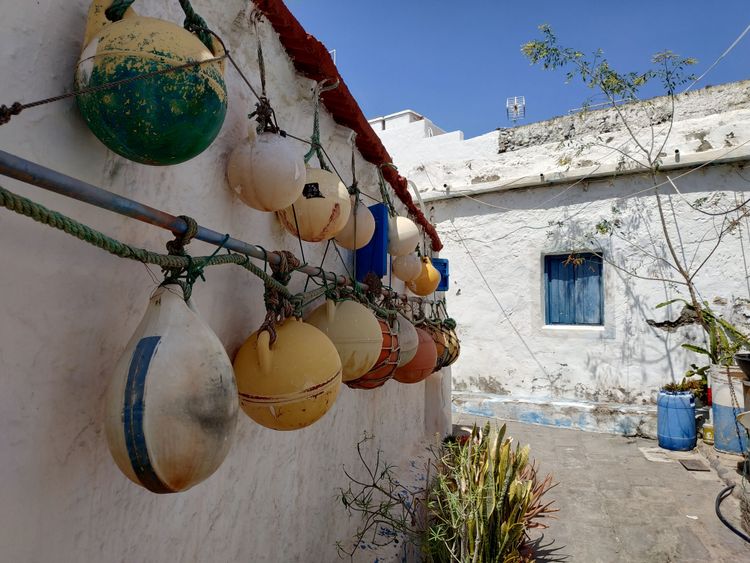 1
1
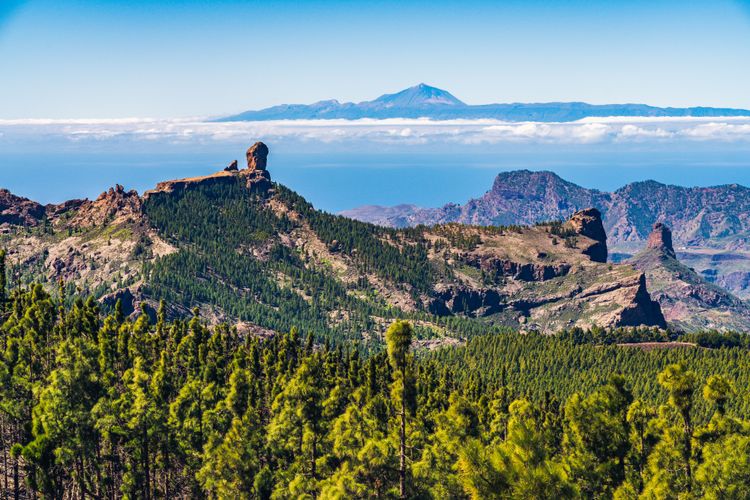 2
2
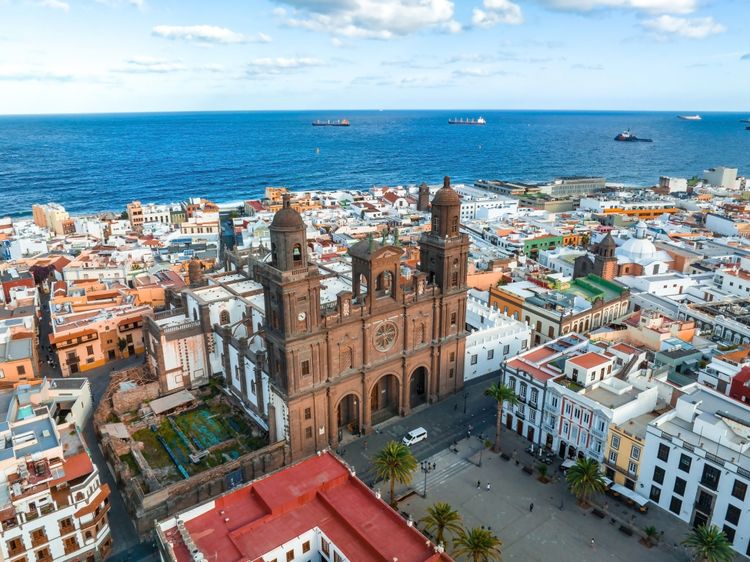 3
3
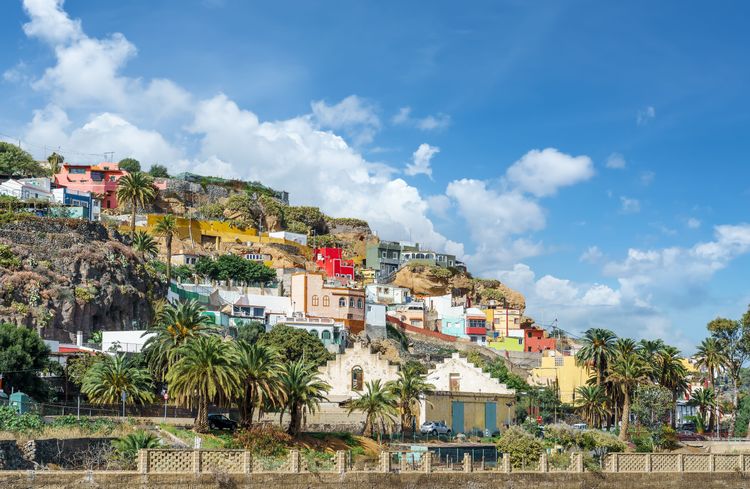 4
4
LPA airport is one of the safest airports in the world, thanks to its location and the optimal weather conditions on the island. Alternatively, if you are coming from the mainland or another Canary Island, you can travel by boat, although the journey is much longer and not very economical, but it does offer the advantage of being able to travel with your own car.
There's no shortage of accommodation options on Gran Canaria. Family homes, hotel chains, holiday resorts, classic or luxury, you'll find what suits you best for your holiday on this miniature continent. Take a look at our list and discover what's on offer in the different areas of the island.
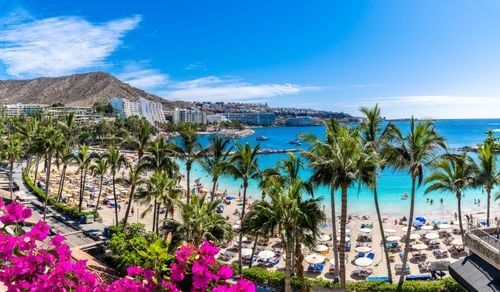
In Gran Canaria, temperatures vary depending on the area of the island, as the mountainous terrain means that altitudes change. In general, however, there are two main seasons on the island: the high season and the mid-season. The high season, characterised by temperatures reaching 38°C in summer and the 'rainy season' between January and February, covers the months of December to April and July to August, and coincides with Christmas, Carnival and Easter. The mid-season includes the other months of the year, i.e. May and June, and the period from September to November. In this season, temperatures are around 28°C, and the atmosphere can be much cooler with some fog. In short, the best times to travel to Gran Canaria are spring and autumn, not so much for meteorological reasons as because these are the least busy times of the year.
The Canary Islands areone of the safest tourist destinations in the world. In fact, the biggest threat to Gran Canaria is sunburn or a good hangover.
However, among the main concerns of travellers visiting Gran Canaria, we would highlight two: cyclones and volcanic activity. But the exceptional climate of the Canary Islands makes it an ideal travel destination, even in times of coronavirus, as most of the tourist attractions are outdoors.
As far as volcanoes in the Canary Islands are concerned, there are currently only four active volcanoes. The most recent eruption was in La Palma, which had nodetrimental effect on the Canary Islands, as most of the gases it continues to emit are released directly into the Atlantic Ocean by the trade winds.
So, because of the coronavirus and the gases emitted by the still active volcano, it is perfectly safe to travel to one of the Canary Islands.
In almost all the Canary Islands, the typical dishes are very similar, although each may have an original touch. There are, however, products that are exclusive to each island and region. The best-known typical Canarian dish is papas arrugadas con mojo rojo ou verde (potatoes with red or green mojo). Another typical Canarian product is gofio, a dish made from ground cereals that can be served in a variety of ways, either savoury or sweet. Another flagship product from the Canaries, which is even exported to mainland Spain, is the Canary banana, which is very tasty thanks to the island's subtropical climate. Nor can you leave the Canaries without trying its cheeses, which may be accompanied by the excellent chorizo de Teror. But more than the Canary gastronomy, it's the typical drinks of the Canary Islands that deserve to be highlighted. These include "leche y leche " coffee - a coffee with condensed milk - and local wines such as Agala de Tejeda, those produced in the Bodega Los Berrazales, or the sweet wine known as "abocado" in some restaurants.
If you decide to travel by plane or without your own car, you can easily get around by public transport, thanks to the extensive inter-city network. It's true that having your own means of transport is more practical, given the size of the island, but it is very well served by the "guaguas" (island buses). That said, if you prefer the independence of a car, you can hire one at LPA airport.
explore Try out our comparators
It is Easy to travel



